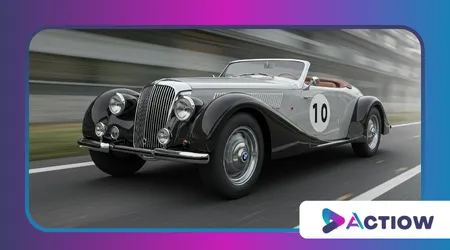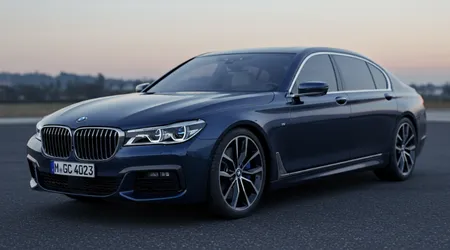The History of BMW: From Airplanes to Luxury Cars

Anúncios
The history of BMW begins not with roaring engines on asphalt, but with the hum of propellers slicing through the sky.
Founded in 1916 as Bayerische Flugzeugwerke (BFW), this German company emerged amid World War I’s chaos, crafting aircraft engines.
What started as a wartime necessity evolved into a legacy of innovation, luxury, and speed. Today, BMW stands as a titan in the automotive world, synonymous with precision engineering and sleek design.
Anúncios
Yet, its journey from aviation to four-wheeled icons is a tale of resilience, reinvention, and bold ambition perfect for anyone curious about how a brand can soar beyond its origins.
Picture this: a small Munich workshop buzzing with engineers, their hands stained with grease, dreaming up machines for the heavens. That’s where BMW’s story took flight, quite literally.
The company’s early years weren’t about leather seats or turbocharged engines, but about powering planes like the Fokker D.VII, a German fighter that ruled the skies.
By 1917, renamed Bayerische Motoren Werke (BMW), it delivered the IIIa engine, a marvel of its time, pushing aircraft to new heights.
This wasn’t just a business it was a crucible of creativity, forging a path that would eventually trade wings for wheels.
Why does this matter in 2025?
Because understanding BMW’s roots reveals a company unafraid to pivot, adapt, and conquer new frontiers.
From those gritty beginnings, BMW didn’t just survive it thrived, turning limitations into opportunities. The Treaty of Versailles in 1919 banned Germany from producing aircraft, forcing BMW to rethink its future.
Instead of folding, it shifted gears, quite literally, setting the stage for a transformation that would captivate car enthusiasts worldwide.
Buckle up, because this ride through BMW’s past is about to get fascinating.
The Unexpected Pivot: Motorcycles and Early Cars
After the aviation ban, BMW didn’t sulk it innovated, diving into motorcycles with the same gusto it once reserved for planes.
In 1923, the R 32 rolled out, a two-wheeled beauty with a boxer engine, blending power and elegance.
That engine design, with cylinders jutting out like a boxer’s fists, became a BMW hallmark, proving the company could adapt its aviation expertise to the ground.
Sales soared, and soon, BMW wasn’t just a name it was a promise of performance.
Cars came next, but not without a twist, as BMW bought the struggling Automobilwerk Eisenach in 1928, inheriting the Dixi.
++ Cars Made for Space: extraterrestrial vehicles
This tiny car, a licensed version of the British Austin Seven, wasn’t glamorous, but it was a start. BMW tweaked it, relaunched it as the BMW 3/15, and watched it gain traction.
By the 1930s, the company unveiled the 303, its first true original car, sporting a kidney grille that’s still iconic today.
This wasn’t just a vehicle it was a statement, marking BMW’s shift from necessity to ambition.

World War II and a Rocky Rebirth
War reshaped BMW’s trajectory again, pulling it back to its aeronautical roots with a dark twist. During
World War II, the company produced engines for Luftwaffe planes, like the BMW 801, a radial beast powering the Focke-Wulf Fw 190.
But this came at a cost forced labor stained its legacy, a grim chapter it acknowledges today. When peace arrived, Allied forces dismantled BMW’s factories, leaving it in ruins, banned from production.
Also read: The Evolution of Tires: From Rubber to Smart Technology
Rebuilding wasn’t glamorous BMW churned out pots, pans, and bicycles, scraping by until the 1950s.
Then came the 501, a luxurious “Baroque Angel” that aimed high but flopped commercially.
Undeterred, BMW pivoted to the Isetta, a quirky bubble car that saved the day, selling over 160,000 units.
This resilience turning scraps into stepping stones defines the history of BMW, showing how grit can fuel a comeback.
The Rise of the Ultimate Driving Machine
By the 1960s, BMW found its groove, crafting cars that married style with substance, like the 1500 sedan. This “New Class” line redefined the brand, blending sporty handling with practical design, winning hearts globally.
Then, in 1972, the 5 Series debuted, cementing BMW’s reputation for luxury and performance.
Marketing genius kicked in too the slogan “The Ultimate Driving Machine” wasn’t just catchy, it was a vow, delivered with every rev.
Read more: The Most Iconic Race Cars in History
Fast forward to the 1980s, and the M division unleashed the M3, a rally-bred rocket that dominated tracks and streets alike.
Data backs this up: the E30 M3 won over 1,500 races, per BMW’s own records, proving engineering could thrill.
This era wasn’t just about cars it was about identity, transforming BMW into a symbol of aspiration, a dream on wheels for millions.
Innovation in the Modern Era
Enter the 21st century, and BMW didn’t rest on its laurels it electrified them, launching the i3 in 2013, a compact EV with a carbon-fiber frame.
Sustainability became the buzzword, yet performance never wavered, as the i8 hybrid sports car proved, blending eco-consciousness with jaw-dropping speed.
In 2025, the history of BMW shines through its Neue Klasse EVs, like the iX3, pushing boundaries with 400-mile ranges and sleek, minimalist vibes.
Technology drives this chapter think autonomous driving aids and infotainment that feels like sci-fi.
The 7 Series, with its crystal-laden interior, screams opulence, while the X5 SUV conquers families and trails alike.
BMW’s knack for balancing innovation with heritage keeps it ahead, a lesson in evolving without losing your soul.
BMW’s Global Impact and Cultural Legacy
BMW’s influence stretches beyond showrooms it’s a cultural force, shaping how we see luxury and engineering in 2025.
From James Bond’s Z3 in GoldenEye to hip-hop videos flaunting 7 Series sedans, the brand oozes cool.
Globally, it employs over 120,000 people, per its 2024 annual report, fueling economies while churning out 2.5 million vehicles yearly.
That’s not just production it’s a lifestyle empire.
The logo itself, a blue-and-white propeller nod to its aviation past, sparks debates some say it’s a myth, but BMW leans into it anyway.
Car clubs thrive, from Munich to Miami, celebrating models like the 2002 or M5. This isn’t just a company it’s a movement, weaving its history of BMW into the fabric of modern life.
Challenges and Triumphs: A Balancing Act
Success doesn’t come without stumbles BMW faced supply chain woes in the 2020s, delaying EV rollouts amid chip shortages.
Critics jabbed at high prices, yet sales climbed, with 2024 marking a record 2.7 million units sold worldwide.
The company doubled down, investing €30 billion in electrification by 2025, a bet on the future that’s paying off as Tesla rivalry heats up.
Triumphs shine brighter the M8 Gran Coupe, launched in 2020, blends 600 horsepower with plush interiors, proving BMW can flex muscle and class.
Recalls happen, sure, but transparency keeps trust alive.
This dance of challenge and victory mirrors the history of BMW, a saga of pushing limits while staying true to its core.

Looking Ahead: BMW in 2025 and Beyond
Today, BMW isn’t just reflecting on its past it’s racing toward tomorrow, with hydrogen projects like the iX5 Hydrogen gaining buzz.
Electrification dominates, yet the growl of an M4 still thrills purists, balancing old-school soul with new-age tech.
Partnerships, like with Toyota on fuel cells, hint at a collaborative future, while concept cars dazzle at auto shows, teasing what’s next.
Imagine a world where BMW’s self-driving EVs whisper through cities, or where its factories run on 100% renewable energy they’re close, targeting carbon neutrality by 2030.
The history of BMW isn’t static it’s a living story, unfolding with every mile, proving a company born in the sky can rule the road.
Tables for Clarity
Table 1: Key Milestones in BMW’s Evolution
| Year | Milestone | Impact |
|---|---|---|
| 1916 | Founded as BFW | Entered aviation industry |
| 1923 | R 32 motorcycle launched | First BMW-branded product |
| 1933 | 303 car introduced | Iconic kidney grille debuted |
| 1972 | 5 Series launched | Luxury sedan legacy began |
| 2013 | i3 EV unveiled | Pioneered sustainable mobility |
Table 2: BMW Sales Growth (2015-2024)
| Year | Vehicles Sold (Millions) | Notable Model |
|---|---|---|
| 2015 | 2.25 | X5 |
| 2020 | 2.32 | M8 Gran Coupe |
| 2024 | 2.70 | iX3 |
Conclusion: A Legacy That Drives Forward
The history of BMW isn’t just a timeline it’s a testament to human ingenuity, a saga of soaring highs and gritty lows.
From crafting airplane engines in a war-torn world to redefining luxury on highways, BMW’s journey captivates.
In 2025, as electric dreams hum alongside roaring classics, the brand remains a beacon of what’s possible when vision meets grit.
For car lovers, history buffs, or anyone chasing a spark, BMW’s story isn’t over it’s accelerating, inviting us all along for the ride.
What’s next for this Bavarian giant?
Maybe a hydrogen-powered M car or a fully autonomous 8 Series dazzling us by decade’s end.
Whatever it is, BMW’s knack for blending heritage with horizon-gazing innovation ensures its tale stays thrilling.
So, next time you spot that kidney grille gleaming, remember: this isn’t just a car it’s a century of daring, distilled into every curve and hum.
